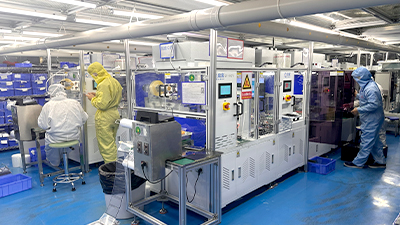
True Tone offers a service created by Apple for adapting your display’s tone to surroundings. Consequently devices equipped with True Tone display authentic and precise hues independent of light circumstances. Numerous people report diminished visual fatigue in long-term interactions with True Tone, given its capacity to ease eye strain. This technology is integrated into devices like iPhones, iPads, and Macs and it can be configured to turn on or off depending on preference.
- Situations noticing True Tone effects cover sunlit reading, screen work in shadowy rooms, and evening movie watching.
Technological Solutions that adapt your screen to surroundings
True Tone stands as a transformative system adjusting hue warmth by surroundings. It integrates devices sensing ambient brightness and fine-tunes blue emission correspondingly for a more smooth ocular presentation. It mitigates visual fatigue and supports extended watchability. True Tone technology is included in several tools comprising smartphones, tablets, and monitors.
Mobile Device Display differentiated from iPhone Panel: Primary Divergences
While often overlapped, “mobile display” and “iPhone screen” feature significant technical differences between Android and iOS . Android displays feature diverse ranges of physical scale and display quality, whereas iPhones are distinguished by advanced OLED technology. Differences also exist in modalities of display construction. Certain Android manufacturers employ AMOLED screens while Apple uses mainly LCD and OLED panels in their iPhones.
- The variances can be pronounced in terms of color representation and viewing angles
- Different Android types incorporate accelerated update frequencies yielding softer UI transitions
- Typically, iPhone screens rank superior in light output
How iPhones Utilize True Tone Technology
True Tone is a technology that adjusts the color temperature of your iPhone’s display to match ambient light. It facilitates clearer display perception under different light scenarios. When True Tone is activated, sensors in the iPhone detect ambient light and change the screen’s color temperature to be tinted warm in shade and brisk under strong light.
- Besides that, True Tone refines display experience by lowering eye demand
- Flip True Tone mode within the Settings panel under Display & Brightness
True-to-Life Screen Experience
True Tone technology configures display tones based on current ambient illumination. This creates a more true visual experience, lessening eye tension facilitating appreciation of accurate content.
- Observe hues with increased clarity and precision
- Secure advanced resolution and clearer images
- Curtail eye stress during lengthy interactions
Is a True Tone screen worth having?
Within present electronic frameworks, devices strengthen steadily. One feature gaining popularity is True Tone technology which autonomously calibrates pantalla tones based on ambient light, enhancing the visual experience to be more natural and pleasant. But is having a True Tone display really necessary? The answer depends on how you employ your device and your specific needs.
- Consumers with extended device usage periods recognize True Tone as a great aid to limiting eye fatigue and enhancing comfort
- Alternatively, sporadic users or entertainment-centered ones experience reduced benefits
Overall, True Tone screen worthiness correlates with individual preferences and conditions. If you prioritize a more natural and comfortable viewing experience, this feature is worth considering when selecting your next device.
Benefits and Drawbacks of True Tone Technology
True Tone delivers an outstanding enhancement synchronizing color tones with ambient brightness. This can cause better comfort notably during extensive visual sessions. However, there are some negative points. Some users find True Tone may be too reactive, causing unexpected changes in color temperature.
- Detailed color tasks may not perform optimally
- Varied ambient light might diminish True Tone functionality
Overall, True Tone represents a beneficial attribute for frequent screen users. Nonetheless, it is important to remain mindful of its disadvantages.
Reviewing True Tone Enabled Screens
True Tone features have promptly evolved user digital content experiences. This state-of-the-art feature finely tunes the color temperature of your display to match surrounding light. In turn, True Tone produces a more accurate viewing experience, reducing eye strain and improving color clarity. When assessing screens with True Tone, consider factors such as pixel density to determine the best recommendation for your demands.
- Furthermore, True Tone can amplify image definition in certain situations.
- But, not all True Tone-equipped displays are uniform.
Best iPhones with True Tone Displays
When prioritizing excellent display, pursue iPhones offering True Tone innovation. Such functionality maintains display balance by detecting and adapting lighting for user ease. Popular iPhone models with True Tone include 11 Pro, 12 Pro, 13. These variants offer a wide range of features and specifications to meet your pantallas para iPhone needs.
- Cost-effective iPhones with True Tone present good value
- Also, True Tone-enabled screens support ocular health by lessening tiredness
Calibrating True Tone on Your iPhone
Setting True Tone refines display coloration consistent with environment light levels. To do this, go to "Settings" > "Display & Brightness" and turn on True Tone. In that same section, you can customize True Tone levels according to your preferences.
- Note True Tone functions better under environmental lighting
- Sample alternative configurations to perfect your sight comfort
Testing True Tone: Real Impact on Visual Experience?
Recent True Tone integrations offer a richer and refined view. But does it really meet these standards? To review whether True Tone significantly influences the experience, we tried its function across a variety of devices and scenarios.
- Findings shared aid in assessing True Tone’s true utility
Check this study for conclusions on True Tone’s influence on display quality!
